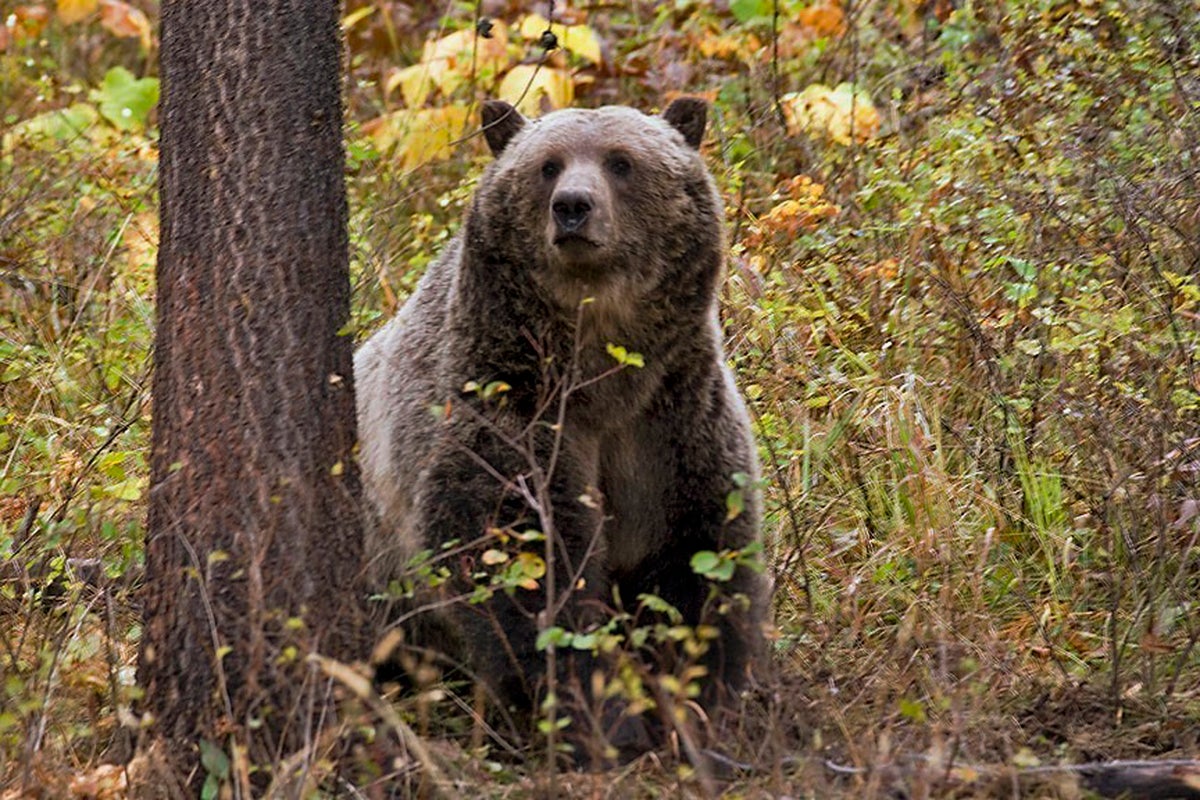
A federal judge in Montana has significantly shortened the state's wolf trapping season to protect grizzly bears that have not yet begun hibernating from being injured by traps.
U.S. District Judge Donald Molloy in Missoula granted a preliminary injunction Tuesday saying Montana's wolf trapping season can only run from Jan. 1 through Feb. 15, the time during which he said it is reasonably certain that almost all grizzly bears will be in dens. The order applies to all five of the state’s wolf hunting districts along with Hill, Blaine and Phillips counties in north-central Montana — basically the western two-thirds of the state.
The injunction remains in effect while the case moves through the courts.
“We are elated that Montana's grizzly bears will at least temporarily avoid the cruel harms caused by indiscriminate steel traps and snares in their habitat,” Lizzy Pennock, an attorney at WildEarth Guardians said in a statement. “We are optimistic that this win is a precursor to securing longer-term grizzly protections.”
The wolf hunting season is already underway and will continue through March 15, the state Department of Fish, Wildlife and Parks said Wednesday.
Under the state's 2023 regulations, trapping season could have started as early as next Monday and run through March 15.
The state plans to appeal and will continue to track the denning status of grizzly bears in case its appeal is successful and the injunction is overturned, the agency said.
WildEarth Guardians and the Flathead-Lolo-Bitterroot Citizens Task Force challenged Montana's 2023 wolf hunting regulations in August. Molloy heard arguments on their motion for the preliminary injunction Monday in Missoula.
The groups argued that since wolf trapping was legalized in Montana in 2012, there has been an increase in grizzly bears captured and injured by traps. This year's regulations put more grizzly bears at risk by lengthening the wolf trapping season and expanding the areas where the wolves can be trapped or shot, they argued.
The state argued it was protecting grizzly bears by creating a floating start date for wolf hunting and trapping areas based on when grizzly bears begin hibernating in each area, that trappers are required to monitor their traps and new trappers must take a trapper education course.
The Department of Fish, Wildlife and Parks and the Fish and Wildlife Commission “have worked diligently to assemble and implement sound science-based management for wolves and grizzly bears, including the wolf regulations impacted by this ruling,” the agency said in a statement Wednesday.
The state hasn't shown its "mitigation factors are as effective in practice as in theory,” Molloy wrote, noting that four grizzly bears with missing body parts, including forelegs and toes, were spotted in 2021.
Grizzly bears have expanded their territory to a wider area of the state and climate change has them remaining outside of their dens longer into the year, Molloy said.
“Therefore it is reasonably certain that more grizzly bears in Montana will be out and about during the time period and in the locations that wolf trapping is permitted under Montana's 2023 regulations,” Molloy wrote in granting the injunction.
Grizzly bears are listed as protected under the Endangered Species Act, which prevents states from authorizing activities that are reasonably likely to kill, trap or injure a listed species.
Montana Gov. Greg Gianforte said Wednesday it's time for “the federal government to review and approve the state's petition to delist the grizzly, which has recovered in Montana's ecosystems.”







